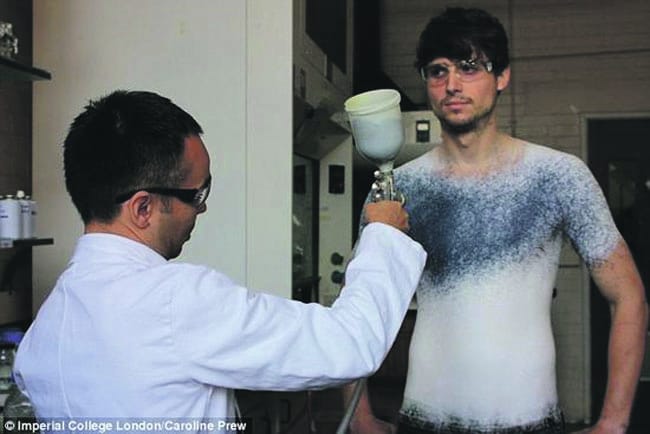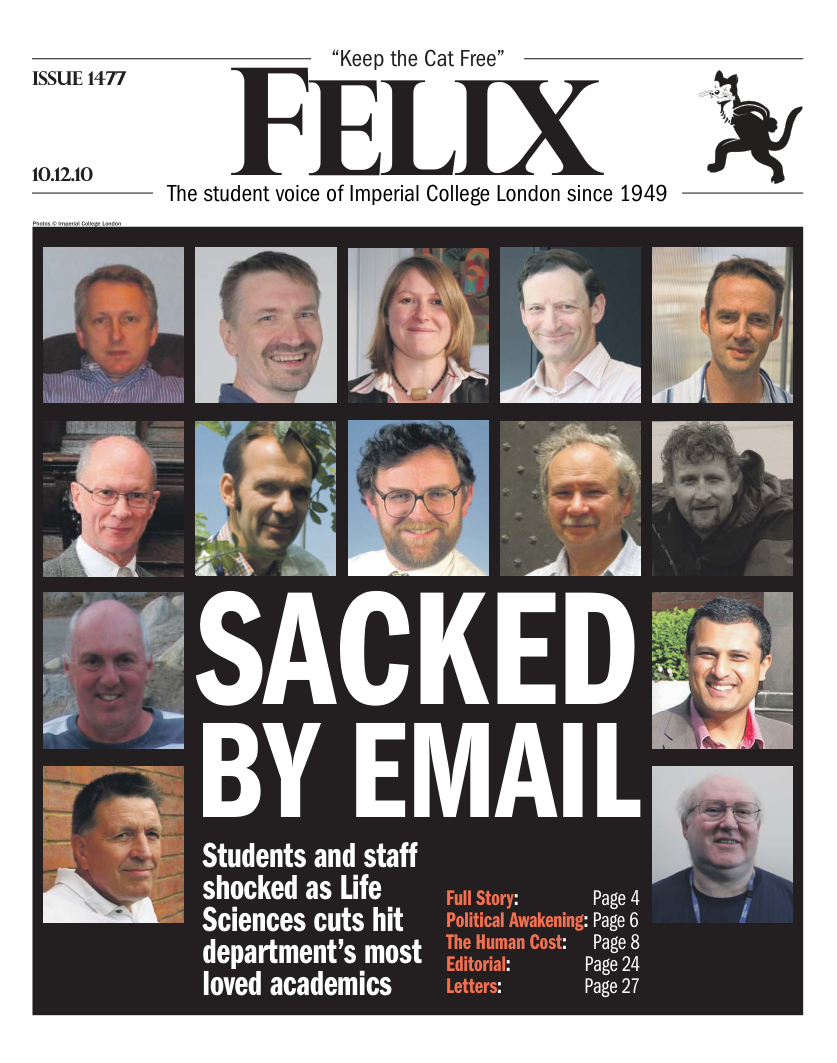Explosion risk rumoured to be cause of spray-fabric lab closure
Highly inflammable substance causes explosion risk in spray-on fabric lab

An explosion risk is rumoured to be the cause of Prof Paul Luckham’s Chemical Engineering laboratory closure in October. The laboratory was being used to test an innovative “spray-on-clothing” developed in conjunction with Dr Manel Torres. Scientists think the fabric, created through careful use of an aerosol, could have explosive applications not only in high fashion but in medicine and industry. The spray contains short fibres that are mixed with polymers and into a solvent, allowing it to be sprayed from a can. The texture of the fabric can be varied by using wool, linen or acrylic fibres. The fabric, which dries when it meets the skin, is very cold when it is sprayed on, a limitation that may frustrate hopes for spray-on underpants.
A spokesperson for Imperial stated at the time that “On Monday 11 October 2010, the College’s Safety Director carried out a routine inspection of lab 433 in the Department of Chemical Engineering and Chemical Technology. During the inspection, the Safety Director found that a fume cupboard in the lab needed cleaning, and that the regulator on a gas cylinder needed replacing. As part of the College’s health and safety protocol, the laboratory was closed to enable staff to carry out repairs.”
However, an anonymous source has informed Felix that the spray contains a highly flammable substance called dimethylether. It is rumoured that the faulty fume cupboards resulted in a build-up of highly flammable vapours in the laboratory, resulting in a significant explosion risk.
Felix obtained a test can of the spray used for the “Science in Style Fashion Show” that took place in the Business School earlier in September. The can is labelled as “Spray for Testing 1st Edition”. A warning on the can states that the contents are “extremely flammable” and “a source of ignition”. When questioned on the matter, Prof Luckham declined to comment and advised Felix to contact the Imperial Press Office. The Press Office stated that their original statement remains unchanged, and would neither confirm nor deny whether there was an explosion risk in the laboratory.










